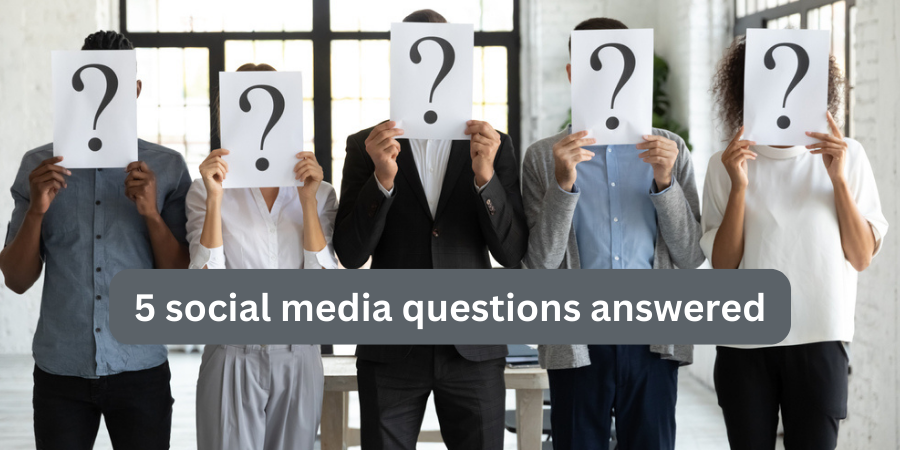
As we manage many of our clients’ social media content generation and distribution we get asked lots of questions about social media. While we’re not the guru of all social media, these are our take on social media.
1: How often do I need to post?
That’s a bit of a ‘how long is a piece of string?’ question! Typically, 2-3 posts a week work well on most platforms – as long as they offer valuable content. If every post is a sales pitch or promo, people will disengage with you altogether. However, if you post useful tips, ideas, advice and guidance people will follow you.
On Twitter people tend to post more frequently. I have had some people who think daily is too often, but they forget that, while they know how many posts are going out, most of the people who see the posts don’t see all of them and a few minutes after you’ve posted they’re so far down the feed that they’ve disappeared.
If people tell you you’re posting too often – they’re probably stalking you, as it takes some effort to see all your posts in one place – particularly on platforms like LinkedIn!
2: Which are the best platforms to post on?
That depends on who you’re trying to reach. If your audience is business people, then LinkedIn, if you’re aiming to reach consumers who are looking for gifts, fitness, health, wedding services, etc. Facebook is still a good place to be. There are pros and cons for all the platforms, but if you are clear about who you want to engage with you, it’s a lot easier.
In fact, if you really know your target audience well, you may even be able to focus on people who are in specific groups, as long as you stick to the group rules and don’t post sales posts, if they’re not allowed. Being helpful and knowledgeable and offering advice is a great way to engage with your ideal clients – and impress them.
3: How long should a post be?
As long as it needs to be to get your message across. That means you need to get good at saying a lot with just a few words.
LinkedIn users seem to engage with longer posts, as long as there is an interesting image or video to grab their attention and the first few words make the reader want to know more.
Instagram is more image-based, so text content is secondary. That doesn’t mean you need to confine yourself to what goes on the image, but that image and opening copy need to be pretty compelling to get the viewer to expand the post and read more. Remember there are no live links within Instagram posts, so if you want to include a link you’ll need to post as a story – and then there is only a small text area.
Facebook sits somewhere between LinkedIn and Instagram. Your posts on your page can be as long as you want them to be, but need to start with a good reason for the reader to take the time to explore.
Videos on TikTok need to be short. 90 seconds is a good target – so you need to be able to get your message across in an entertaining way in a very short time frame. Think about how TV ads for luxury products work – they’re a mini-film with a story.
4: Should I outsource social media?
You can outsource content generation, but you can’t abdicate all responsibility for your social media feeds. No outsourced service can be you – no matter how well they know you, even the best social media agencies can’t think the way you do, nor do they have your years of knowledge and experience. That means you need to be ready to respond when people comment on your posts.
Get into the habit of keeping an eye on your feeds at least daily. It doesn’t have to be time-consuming. I find that attaching a new habit to an existing one is the easiest way to remember – so when you’ve finished checking your email inbox, take a quick tour of your social media. Of course, most platforms allow you to get an email notification when someone comments or likes your post too, which can help.
5: What else should I do to improve my social media performance?
Don’t be a one-way street. Nobody likes people who just broadcast, broadcast, broadcast, but don’t engage with others.
If you want to improve your engagement then you have to be an engager. That doesn’t mean randomly liking posts, but instead choose the people you think are worth engaging with. This might include:
- Influencers in your industry, so you stay in touch with what’s new
- People in the businesses that are your target audience
- People who are geographically local – if that’s where you operate
- Your peers to give them support
- Anyone you would give a testimonial to
That’s just a few. Spend a few minutes every day looking at their posts and commenting. Not just ‘great post’, say something thoughtful or thought-provoking. It all contributes to your reputation.
And finally …
Remember that social media is part of your marketing activity, so don’t begrudge the time you spend on it. It helps maintain your visibility and influence your reputation.
